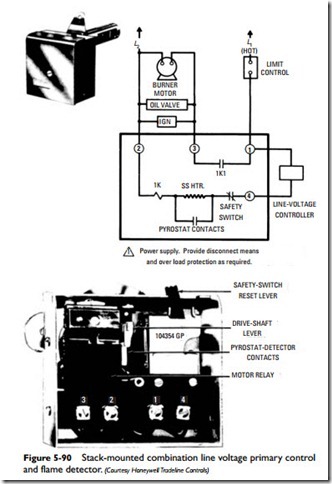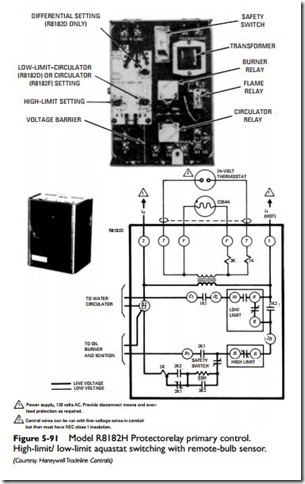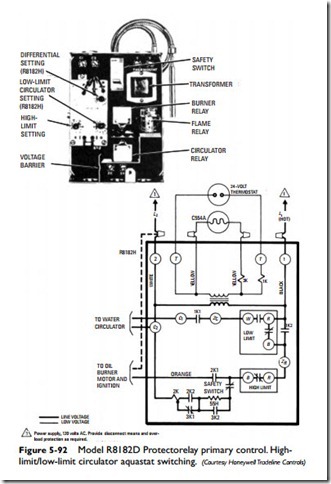Combination Primary Control and Aquastat
The combination primary control and aquastat is designed for use with a constant-ignition oil burner in a hydronic heating system. The purpose of this unit is to supervise the operation of the oil burner and provide both water temperature and circulator control. A remote sensor (cadmium detection cell) is used to detect any irregularities in the oil burner flame.
Figures 5-91 and 5-92 illustrate a number of different combina- tion primary control and aquastat units used in hydronic heating systems. In operation, the high-limit switch (SPST) will automati- cally turn off the burner if the boiler overheats. The low-limit circu- lator switch (SPDT) is used to maintain water temperature for the domestic hot-water supply. It will also prevent the circulator from operating if the water temperature is too low (i.e., below the set- point).
On the units shown in Figures 5-91 and 5-92, a call for heat from the room thermostat pulls in relays 1K and 2K to turn on the oil burner and start heating the safety switch. Under normal oper- ating conditions, the burner should ignite within safety-switch tim- ing. If such is the case, the cadmium cell detects the flame, and relay 3K pulls in to deenergize the safety-switch heater. The oil burner then continues to operate until the call for heat is satisfied.
The circulator (pump) in the heating system operates when relay 1K pulls in only if the R to W contact on the aquastat control is made (see Figure 5-92). A drop in water temperature will cause the R to B (low limit) contact to be made. This acts as a call for heat, pulling in relay 2K to turn on the oil burner.
Combination primary control and aquastat units are also used on water heaters (see Chapter 4 of Volume 3, W“ Other Appliances).


